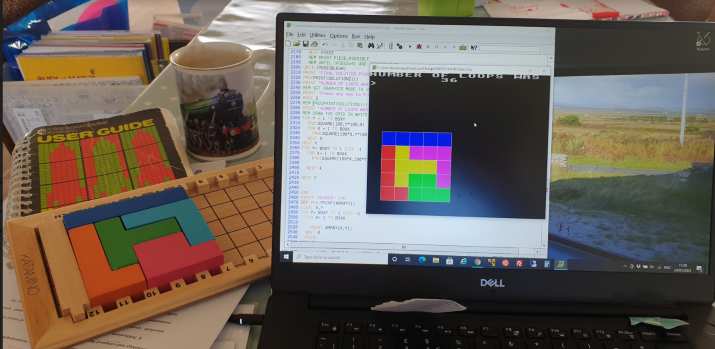I discovered the existence of Pentominoes quite recently while reading Arthur C Clarke’s “Imperial Earth”. Checking out the Wikipedia page I discovered that these were a quite recent concept (well, 1953) and had originally been made popular by Martin Gardener in his Scientific American column. Somewhere in the loft I have Gardener’s “Mathematical Puzzles and Diversions” which probably includes a section on Polyominoes, of which the Pentomino is but a 5 cell subset. Another famous subset is the Tetromino which was used in the video game Tetris. I think in the loft I have an old gameboy with Tetris, I wonder if it still works. I recall I bought Gardener’s great book to learn more about hexaflexagons which I had seen featured in the 1974 Royal Institute Christmas Lectures by Eric Laithwaite. Somewhere in the same loft (the loft gets quite a few mentions but I can’t hyperlink to it), I also have a letter from Laithwaite. Since I was only 9 at the time I probably didn’t understand most of the concepts of the lectures or the books, but they probably had an influence on my scientific career. Someday soon I might seek out the book and see if I understand it now.
I introduced the Pentominoes to my children (8, 10) using coloured paper squares in pretty much the same way that Clarke introduces them in his books to the fictional child, Duncan. In 15 minutes my children had found more of the possible 12 shapes (ignoring reflections and rotations) than I did. The paper versions I had made, even when improved with light cardboard and blu tack didn’t really work out that well, but did provide a few hours of non screen related diversion for the family after covid lockdown school had finished.
Later, whilst out walking the dog, I decided that it would do my brain good to write a computer program which searched for solutions to a Pentomino type problem. Of course there are doubtless whole websites dedicated to such containing algorithms, discussions and free programs to download. However, for once, I wanted to develop something from scratch like we used to before the internet ! I also decided to use BBC basic which is also a throwback to the 80’s for me (these is also an old BBC microcomputer in the loft).
I first setup a website in 1999. However once I set it up I couldn’t think of much to populate it with that would be of interest to anyone else. I think I added song lyrics of tunes I could play on the guitar, a few pretty photos and a thought for the day section. I imagine this is what early Facebook pages looked like and it turned out that I didn’t have many thoughts. In 2001 I changed the site into xsgeo.com which contained some basic training material, but I was never very much attracted by the blogging concept. When I setup this store to enable sales of training courses and other services the blog part came for free, since I used WordPress as the basis for the ecommerce part of the website. I had the idea that visitors to the website could use the blog posts to file problems or curiosities with the seismic data which I (or other users) could then comment on. The purpose of this particular blog, though, is to record my thought process and progress towards the goal of writing Pentomino code which will find a solution to a given problem and provide appropriate graphical printout.













